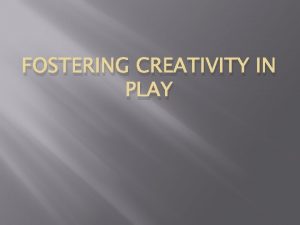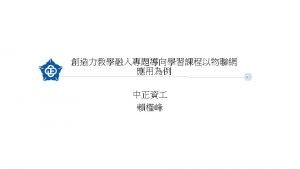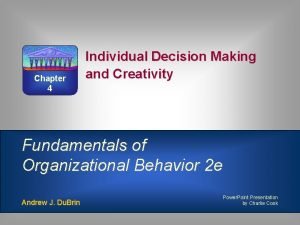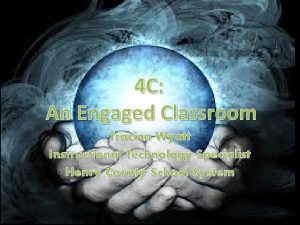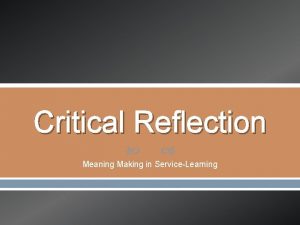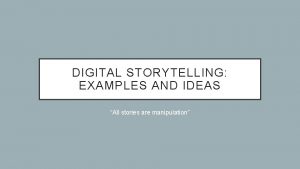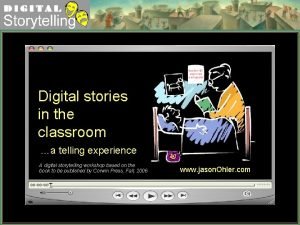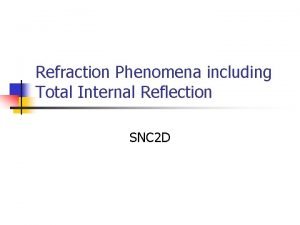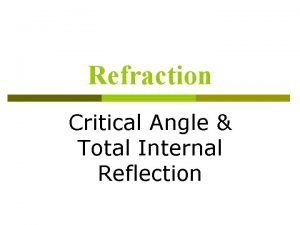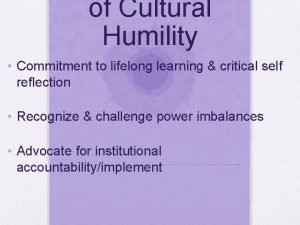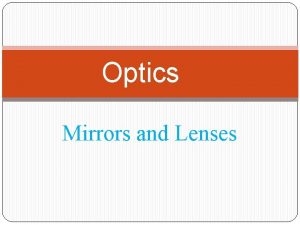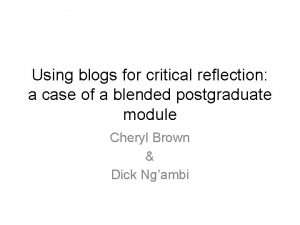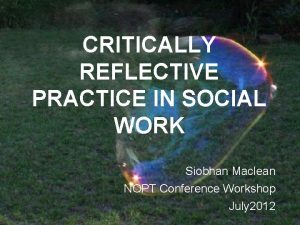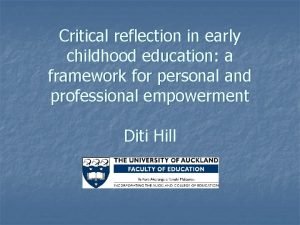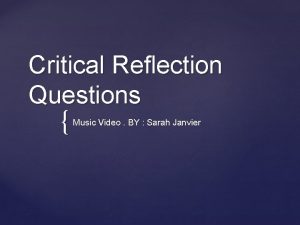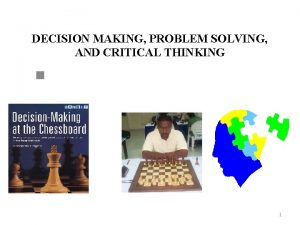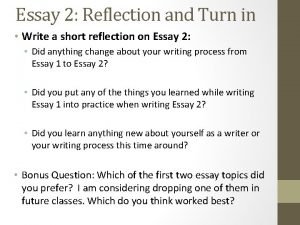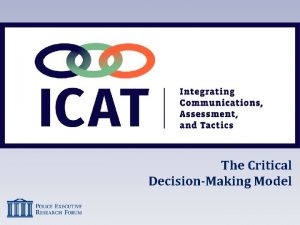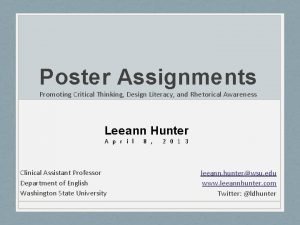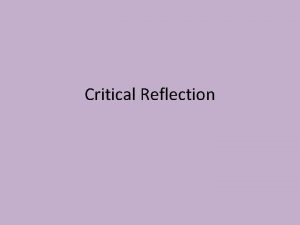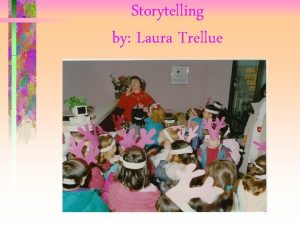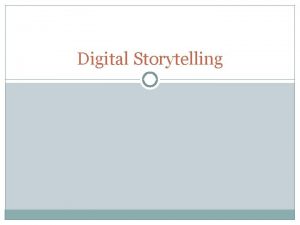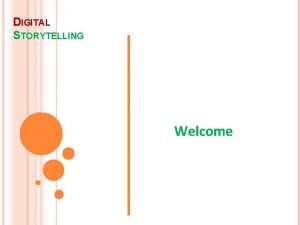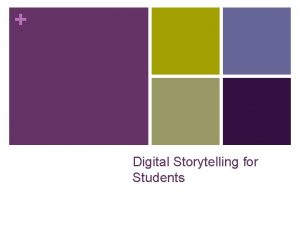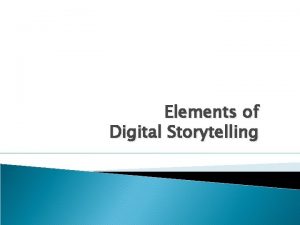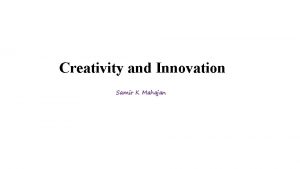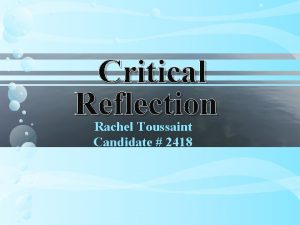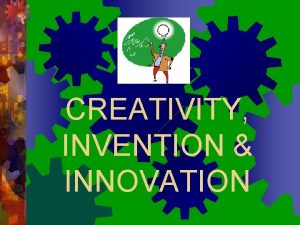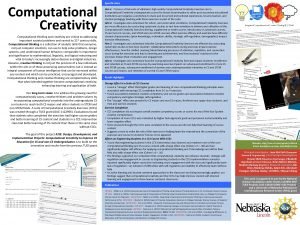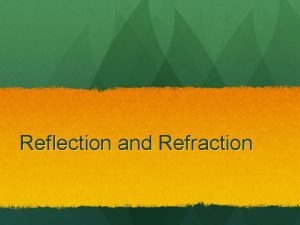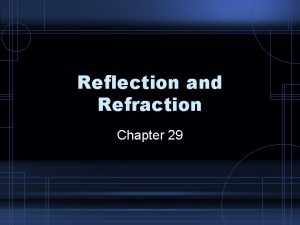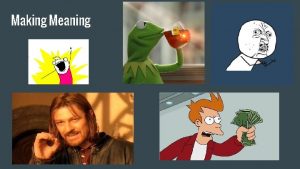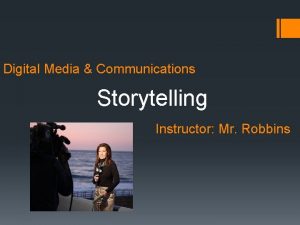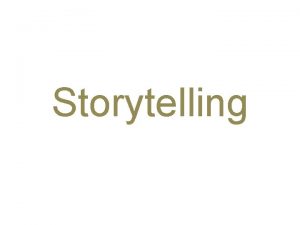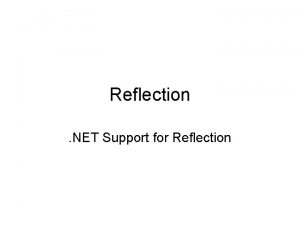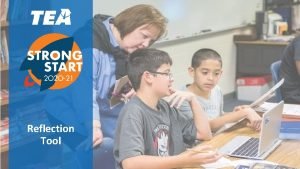Digital Storytelling and Meaning Making Critical Reflection Creativity
























- Slides: 24

Digital Storytelling and Meaning Making: Critical Reflection, Creativity and Technology in Pre-service Teacher Education Bonnie Long, Education Technologist, NUIG School of Education Galway Doctoral Research Fellow 4 th Internation Digital Storytelling Conference, Lillehammer, Norway, 4 -7 February, 2011

Introductory Digital Story 4 th Internation Digital Storytelling Conference, Lillehammer, Norway, 4 -7 February, 2011

Research Project • Digital Storytelling and Meaning Making: Critical Reflection, Creativity and Technology in Preservice Teacher Education – Studying the use of digital storytelling to enhance reflection in pre-service teacher education • Research questions: – How can DST be designed to enhance reflection in teacher education? – Does DST allow Pre-service teachers to better evidence their reflection and growth? – In what way does DST enhance student teachers’ ability to construct their professional identity as teacher? 4 th Internation Digital Storytelling Conference, Lillehammer, Norway, 4 -7 February, 2011

Methodology • Design Based Research – Ongoing cycles of research, design, implementation, reflection/evaluation and redesign – mixed methods approach – both qualitative and quantitative research methods • Methods of Data Collection: – Questionnaires – Analytic assessment rubrics – Online discussion boards – Researcher’s journal – Digital stories produced by the students – Students’ digital storytelling ‘working portfolios’, including all planning and design documents 4 th Internation Digital Storytelling Conference, Lillehammer, Norway, 4 -7 February, 2011

Why DST and pre-service teachers? • Make Reflection on practice engaging, creative • Develop ICT skills • Develop students’ technology self efficacy – Increase possibility of preservice teachers integrating technology into their future teaching Digital is “To date, storytelling I haven’t seen an a highly activity motivating that allows students to blend strategy thatdesign, can creativity, thoughtful make reflection expression, and concrete andasvisible. technology skills well as (Barrett, 2006, p. 1) DST does. ” (Ohler, 2008, p. 13) 4 th Internation Digital Storytelling Conference, Lillehammer, Norway, 4 -7 February, 2011

Our Definition of a DST: • Center for Digital Storytelling model • Short, 3 -5 minute video • Produced by someone who is not a media professional • Incorporates multimedia components such as still images, music, voiceover, video • Constructed as a thought piece on a personal experience • Narrated in the author’s own voice • The story is the focus (Matthews-De. Natale, 2008) (Dogan & Robin, 2006) 4 th Internation Digital Storytelling Conference, Lillehammer, Norway, 4 -7 February, 2011

2009 -2010: The Pilot Project • Implemented Digital Storytelling (DST) unit with PGDE students – Whole cohort taken through the DST process in Ed Tech class, semester 2 – Given a choice to write an essay or complete a DST for the closing section of their professional practice portfolio – 18* students volunteered to complete a digital story 4 th Internation Digital Storytelling Conference, Lillehammer, Norway, 4 -7 February, 2011

The DST Unit: • Five one hour lessons, over five weeks • Covered the stages of digital storytelling process: 1. 2. 3. 4. 5. Introduction to DST and Storytelling in Education Story Circle and Script Creation Image/Music Sourcing and creation Windows Movie. Maker or i. Movie Tutorial Work Session • Students had six weeks additional time to finish DST after the formal lessons 4 th Internation Digital Storytelling Conference, Lillehammer, Norway, 4 -7 February, 2011

Hardware/Software Used: • Wanted to use what was available in the computing suites and/or free to use – PC’s in the computer suites – Windows Movie Maker – Myna, Aviary. com’s audio editing website 4 th Internation Digital Storytelling Conference, Lillehammer, Norway, 4 -7 February, 2011

The Assignment Brief: • Closing Section of their Professional Practice Portfolio Aim: To…demonstrate your capacity to draw connections between different elements of the PGDE programme and to offer a synthesis of your learning as a whole. In your digital story, reflect on: • your educational journey • re-evaluate learning goals and learning philosophies, evaluate achievement of these learning goals • trace any transformations in your learning and teaching beliefs, values, attitudes, and assumptions, how these changes have come about • relate what/why/how different elements of the PGDE programme contributed to your learning and teaching • highlight significant landmark achievements/improvements you have made to your learning and teaching (can draw from your journal, lesson plans and evaluations…) 4 th Internation Digital Storytelling Conference, Lillehammer, Norway, 4 -7 February, 2011

What did they create? 4 th Internation Digital Storytelling Conference, Lillehammer, Norway, 4 -7 February, 2011

How did it work out? Students enjoyed creating their digital stories All found it a rewarding experience Found it to be a reflective, engaging process All enjoyed the chance to be creative Almost all showed high degrees of technology efficacy at the end of the process • Most felt it helped them to articulate what they learned as pre-service teachers this year • • • 4 th Internation Digital Storytelling Conference, Lillehammer, Norway, 4 -7 February, 2011

How did it work out? • All felt it improved their ICT skills • All felt that using images, music and sound in the DST made it easier to express themselves • Voiceover recording was the hardest part for most due to technical difficulties • Time intensive – average 30 hours on whole process – much more time than an essay! 4 th Internation Digital Storytelling Conference, Lillehammer, Norway, 4 -7 February, 2011

What do the students have to say? • What did you like most about the digital storytelling process? “I“Iliked andthe getting use some likedchoosing the way Iimages, could see storyto unfolding asof I my ownon personal images. I also liked using story worked it and that I could express myselfthe through boardand to organise myself. Ihaving felt that was a very pictures images without to itsay everything. visual approach projectwhat and Imay betoa I sometimes findtoitcompleting hard to say aexactly want useful tool help students are visual learners convey andto this provided anwho alternative method for organise themselves for any kind of project. ” me to work with. ” 4 th Internation Digital Storytelling Conference, Lillehammer, Norway, 4 -7 February, 2011

What do the students have to say? • Were you pleased with the outcome of your digital story? – All said “yes” – Some of their comments were: “It was great to see all my hard work come together “I felt that I had completed something meaningful for in a movie and I feel really confident in using the myself while at the same time learning a new skill. ” software for other school work now. ” 4 th Internation Digital Storytelling Conference, Lillehammer, Norway, 4 -7 February, 2011

Levels of Reflection Achieved: 10 • Deep reflection not as apparent as we’d hoped it would be in the final product • Using a rubric based on Moon’s (2004) generic framework for reflective writing, results were: • Interesting to note that those who scored highest on levels of reflection strayed furthest from the brief given to them 9 8 7 6 5 4 3 10 2 1 5 – Caused me to question the task set for them in the first place Descriptive Reflective (1) Reflective (2) Descriptive 0 3 0 with some reflection 4 th Internation Digital Storytelling Conference, Lillehammer, Norway, 4 -7 February, 2011

Lessons Learned with Pilot: • Task set for students needs to match desired outcomes • More time needed for story creation • Place more emphasis on ‘story circle’ step of process • More time needed for lesson on voice recording • Refine voiceover process to make it easier 4 th Internation Digital Storytelling Conference, Lillehammer, Norway, 4 -7 February, 2011

Lessons Learned with Pilot: • Quality of voiceover was a big problem • Need to include reflection engendered by multimedia aspects of the process • Need time to share stories at the end of the project • Researcher needs to experience creation of a digital story 4 th Internation Digital Storytelling Conference, Lillehammer, Norway, 4 -7 February, 2011

Changes to Design of Unit for Year 2: • Digital Story will be based on the Critical Incident Analysis part of the portfolio • Brief is to: – Create a digital story about a ‘critical incident’ • An incident that occurred which made you subsequently think and/or act differently • Much more time given to story development – Incorporated into tutorial on Critical Incident – Feedback from tutors and peers – More emphasis on story circle step • Based on Mc. Drury & Alterio (2002) 4 th Internation Digital Storytelling Conference, Lillehammer, Norway, 4 -7 February, 2011

Changes to Design of Unit for Year 2: • All students completing a digital story • More time devoted to the unit overall • Refinement of voiceover recording process 4 th Internation Digital Storytelling Conference, Lillehammer, Norway, 4 -7 February, 2011

Questions Raised: • Is process more important than product? • What does the use of images and sound add to reflection? – How do I measure this? • Evidence of identity creation? • The research continues… 4 th Internation Digital Storytelling Conference, Lillehammer, Norway, 4 -7 February, 2011

References • Barrett, H. (2006). Digital Stories in e. Portfolios: Multiple Purposes and Tools Retrieved 17/4/09, 2009, from http: //electronicportfolios. org/digistory/purposes. html • Jakes, D. (2007). Digital Storytelling and 21 st Century Skills. Paper presented at the Tech. Forum Orlando. Retrieved 29/1/10, from http: //archive. techlearning. com/techlearning/events/techforum 07/dst_orlando_jakes. pdf • Li, L. , & Morehead, P. (2006). Digital Storytelling: Self-Efficacy and Digital Literacy. Paper presented at the World Conference on ELearning in Corporate, Government, Healthcare, and Higher Education 2006, Honolulu, Hawaii, USA. • Matthews-De. Natale, G. (2008). Digital Storytelling - Tips and Resources. Retrieved on 16/4/09 from http: //www. educause. edu/Resources/Digital. Story. Making. Understandin/162538 • Mc. Drury, J. , & Alterio, M. (2002). Learning through storytelling in higher education. London: Dunmore Press. • Mello, (2001) The power of storytelling: How oral narrative influences children’s relationships in classrooms. International Journal of Education and the Arts. 2(1) • Moon, J. (1999). Reflection in Learning and Professional Development. London: Kogan Page. • Moon, J. (2004). A Handbook of Reflective and Experiential learning: Theory and Practice. London: Routledge Falmer. • Ohler, J. (2008). Digital Storytelling in the Classroom: New media pathways to literacy, learning and creativity. Thousand Oaks, CA: Corwin Press. • Jason Ohler’s Website: http: //www. jasonohler. com/storytelling/storyeducation. cfm • Partnership for 21 st Century Skills • Porter, B. , (2004) Digitales: The art of Digital Storytelling, Sedalia, CO, BJP Consulting • Sandars, J. , Murray, C. , & Pellow, A. (2008). Twelve tips for using digital storytelling to promote reflective learning by medical students. Medical Teacher, 30, 774 -777. • Schank, R. (1990). Tell Me a Story: Narrative and Intelligence. Evanston, IL: Northwestern University Press. • Søreide, G. E. (2006). Narrative construction of teacher identity: positioning and negotiation. Teachers and Teaching: Theory and Practice, 12(5), 527 -547. 4 th Internation Digital Storytelling Conference, Lillehammer, Norway, 4 -7 February, 2011

Image Sources: • • • Audacity image: www. sourceforge. net Blue Snowball mic image: http: //condensermic. net/blue-snowball-microphone/ CDS graphic: http: //www. storycenter. org/ DST wordle graphic: Created by Bonnie using www. wordle. com Windows Movie. Maker image: http: //it. seattleschools. org/BEXlevy/wpcontent/uploads/2009/06/moviemaker. jpg Aviary’s Myna image: http: //aviary. com/tools Wide-screen TV image: http: //www. dolphin-media. co. uk/images/wide_screen_tv. jpg NUI Galway Image: http: //www. crookhaven. net/attractions. php Tutorial image: celtscot. ed. ac. uk 4 th Internation Digital Storytelling Conference, Lillehammer, Norway, 4 -7 February, 2011

Notice of Use Restrictions • Certain materials in this presentation are included under the Fair Use exemption of the U. S. Copyright Law and/or under the Fair Dealing exemption of the Ireland Copyright and Related Rights Act, 2000 • Materials are included in accordance with the [U. S. ] multimedia fair use guidelines; and • Materials are restricted from further use. • © EDMAN YOST, J. (1999), Copyright Chaos - An Educator's Guide to Copyright Law and “Fair Use”, Intel Teach to the Future CD 4 th Internation Digital Storytelling Conference, Lillehammer, Norway, 4 -7 February, 2011
 Creativity and play fostering creativity
Creativity and play fostering creativity Critical semi critical and non critical instruments
Critical semi critical and non critical instruments Semi critical instruments in dentistry
Semi critical instruments in dentistry Digital storytelling meaning
Digital storytelling meaning An introduction to critical thinking and creativity
An introduction to critical thinking and creativity Decision making and creativity organizational behavior
Decision making and creativity organizational behavior Communication creativity critical thinking collaboration
Communication creativity critical thinking collaboration Reflection tool meaning
Reflection tool meaning Digital storytelling script examples
Digital storytelling script examples Digital storytelling rubric
Digital storytelling rubric Total internal reflection
Total internal reflection Critical angle
Critical angle Lifelong learning and critical self-reflection
Lifelong learning and critical self-reflection Diffuse reflection vs regular reflection
Diffuse reflection vs regular reflection Critical reflection sample
Critical reflection sample York model of reflection
York model of reflection Smyth model of reflection example
Smyth model of reflection example Music reflection questions
Music reflection questions Nonmalefiscence
Nonmalefiscence Writing reflection
Writing reflection War making and state making as organized crime
War making and state making as organized crime Critical reading meaning
Critical reading meaning Shadow storytelling
Shadow storytelling Critical decision making
Critical decision making Critical thinking poster making
Critical thinking poster making
